The Havapoo, a delightful cross between a Havanese and a Poodle, has a special place in my heart, much like it does in the designer breed world. It goes by other names, such as Havapoodle and Poovanese.
With their keen intelligence and affectionate personality, these dogs quickly shift from being mere pets to becoming integral family members. Their flexibility fits perfectly into home environments, from bustling family settings to quieter single-person households. It’s true what they say—great things often come in small, fluffy packages.
When you first meet a Havapoo, it’s hard not to be charmed. Their soft, wavy coats and bright, expressive eyes can melt even the coldest hearts. As someone who has spent countless hours observing and interacting with them, I can vouch for their ability to captivate anyone looking for a furry friend.
But there’s more to Havapoos than just their adorable looks. These dogs are known for their playful demeanor and an incredible ability to tune into human emotions, which I find invaluable. They’re fantastic at lifting spirits on a tough day and bringing extra joy to the good ones.
Living with a Havapoo means having a constant source of unconditional love and cheerfulness. They truly demonstrate how dogs can be more than pets—they’re family.
TABLE OF CONTENTS
- Havapoo Quick Breed Summary Table
- Origins of the Havapoo
- Havapoo Physical Appearance
- Havanese Poodle Mix Personality and Temperament
- Taking Care of a Havapoodle
- How to Train a Havanese Poodle Mix
- Common Health Issues Among Havapoos
- Costs of Owning a Havanese Poodle
- FAQs: More about Havapoos
- So, Is a Havapoo Right for You?
- Other Miniature or Toy Poodle Mixes
Havapoo Quick Breed Summary Table
Origins of the Havapoo
From Adobe Stock
Exploring the lineage of a breed like the Havapoo is like uncovering a fascinating story of legacy and deliberate design. It’s a journey through time and traits that showcases the wonder of canine evolution and our ongoing quest for the perfect companion.
The Havanese Heritage
The Havanese, a breed with roots deeply embedded in Cuban history, is one of the Bichon family’s vibrant members. Originally bred by the Spanish settlers of Cuba to be companion dogs for the wealthy, their charm and intelligence soon made them beloved by all. Over the years, I’ve observed that the Havanese have retained their aristocratic demeanor, yet they’re as playful and affectionate as any dog you could hope to meet.
Their adaptability is remarkable, making them as suitable for apartment living as they are in a sprawling estate. This versatility is something they pass on to their Havapoodle offspring, contributing to the hybrid’s wide appeal. The Havanese’s silky, flowing coat and expressive eyes are traits often inherited by the Havapoo, enhancing their allure.
Poodle Pedigree
Poodles, known for their intelligence and elegance, are more than just show dogs with fancy haircuts. Originating in Germany as duck hunters, their name derives from the German word “pudel,” which refers to splashing in the water. I’ve always admired how Poodles combine brains with athleticism, a blend that they bring to the Havapoo mix. Their hypoallergenic coats are a significant plus for families with allergies, a feature that’s eagerly sought after.
In terms of personality, Poodles are remarkably sociable and trainable, traits that make them excellent candidates for various dog sports and therapy work. This sociability and ease of training are also seen in the Havapoo, making them not only a joy to live with but also a breeze to train.
The Creation of the Havapoo
The Havapoo emerged as a distinct breed in the United States during the late 1990s to early 2000s, part of a broader trend towards designer dog breeds. The goal was to create a dog that combined the Havanese’s size and companion qualities with the Poodle’s intelligence and hypoallergenic coat. From what I’ve seen, the breeders succeeded admirably, crafting a dog that fits beautifully into family settings.
The rise of the Poovanese coincides with a growing recognition of the importance of temperament and manageability in dogs, especially for urban dwellers. Their small size, low-shedding coat, and delightful disposition make them particularly appealing to those living in apartments or those with allergy concerns. This thoughtful blend of characteristics ensures the Havapoo’s place as a cherished companion in the world of mixed breeds.
Havapoo Physical Appearance
From Adobe Stock
The Havanese Poodle Mix is as cute as they come, with each feature perfectly capturing the essence of this charming hybrid. Their looks not only draw admiring glances but are also practical for those seeking a companion that fits into various lifestyles, from city apartments to country homes.
Size and Weight
Havapoodles are small, which makes them great for anyone looking for a dog that’s easy to manage. They typically stand about 8 to 15 inches tall at the shoulder—just the right size to scoop up into your lap. When it comes to weight, they usually tip the scales at a friendly 15 to 45 pounds, depending on their specific Poodle parentage. Despite their modest size, these pups pack a vibrant personality that fills the room.
Coat and Color
One of the first things you’ll notice about a Havapoodle is its luxurious coat. Depending on their heritage, their fur can range from soft and wavy to curly like a Poodle’s, often with hypoallergenic qualities that make them a top pick for allergy sufferers. Plus, their thick coats make them excellent snuggle buddies during the chilly months.
When it comes to color, Havapoos shine with variety. They sport coats in black, white, grey, brown, and sometimes a captivating mix of these shades. You might even spot one with unique markings or a blend of colors that stands out. This array of colors adds to their charm, making each Havapoo uniquely delightful.
Other Physical Features
With their expressive eyes and a touch of the Poodle’s refined posture, Havapoos often look as though they’re ready for a photo. Their ears usually hang down, adding to their adorable appeal, and their tails might curl jauntily over their backs or drape down with a gentle curve. Agile and sturdy, these dogs are up for anything, whether it’s a morning jog or a lazy evening on the sofa.
Every bit of the Havapoo’s design—from their hypoallergenic coat to their compact build—is meant to charm and comfort. They’re not just cute; they’re also wonderfully practical pets.
Havanese Poodle Mix Personality and Temperament
Getting to know a Havapoo is like discovering a hidden gem. Their personality and temperament reflect a perfect balance of their parent breeds, making them an exceptional choice for many families and individuals.
Playful and Affectionate
Havapoos are inherently playful and affectionate, traits that make them perfect companions. In my experience, these dogs have an infectious energy that can light up a room. Whether it’s a game of fetch or a quiet evening at home, they bring joy and liveliness to any situation. Their affectionate character is palpable. They love to snuggle and are always eager for a cuddle. It’s this combination of playfulness and loving kindness that often makes them favorites in any household.
Intelligent and Trainable
One of the most remarkable traits of the Havapoo is their intelligence. Stemming from both the clever Poodle and the quick-witted Havanese, Havapoos are very receptive to training. I’ve found them to be eager learners, always ready to please their owners. This makes training sessions not just productive but also quite enjoyable. Whether you’re teaching basic commands or more complex tricks, Havapoos catch on quickly, often looking for what they can learn next.
Sensitive and Sociable
Havapoos are incredibly sensitive to the emotions of their owners, which makes them excellent companions, especially for those who need emotional support. They seem to understand when you’re feeling down and know just how to cheer you up. Additionally, they’re quite sociable, both with humans and other animals. They adapt well to new people and pets, making them ideal pets for families or individuals.
Adaptable and Easy-going
The adaptable nature of Havapoodles is something that I always highlight to potential dog owners. They’re just as comfortable living in a small apartment as they are in a large home with a backyard. Their easygoing temperament makes them well-suited to a variety of living situations and lifestyles. Whether you’re an active individual looking for a companion on your adventures or someone who enjoys the peace of home, a Havapoo can fit right into your life with ease.
Taking Care of a Havapoodle
From Adobe Stock
Looking after a Havapoo is an absolute pleasure. These pups are wonderfully adaptable and easy to please, fitting seamlessly into all kinds of lifestyles. A little love and care go a long way with these cheerful companions, ensuring they stay healthy and happy.
Feeding
Proper nutrition is vital for a Havapoo’s health and well-being. Here are some detailed tips I’ve picked up along the way:
- Quality Diet: Opt for high-quality dog food that matches their age, size, and activity level. Havapoos do well on both dry kibble and wet food. Look for options rich in proteins and essential nutrients to support their overall health.
- Regular Schedule: Consistency is key in feeding. Typically, adult Havapoos thrive on two meals a day, while puppies may need three to four smaller meals to support their growth and energy.
- Watch the Treats: Treats are great for training and bonding, but moderation is crucial. They should only constitute about 10% of their total caloric intake to prevent weight issues.
Exercise
Despite their compact size, Havapoos have a good deal of energy that needs to be managed through regular activity:
- Daily Walks: I recommend at least 30 minutes of walking each day. This helps to keep them physically fit and mentally alert.
- Playtime: Engage them with fun activities like tug-of-war, fetch, or chase. These games help them burn off energy and stay mentally engaged.
- Socialization: Regular social interactions with other dogs and people can significantly improve their social skills. Play dates and park visits introduce variety to their routine and help maintain their friendly demeanor.
Grooming
Proper grooming is essential for maintaining a Havapoo’s health:
- Brushing: Their curly to wavy coats require regular brushing several times a week to prevent tangles and matting. This also helps distribute natural oils across their coat, keeping it healthy and shiny.
- Bathing: Bathe your Havapoo every few weeks or as necessary, depending on their lifestyle. Use a gentle, dog-specific shampoo to prevent skin irritation.
- Nail Trims and Ear Checks: Regular nail trimming and ear checks are vital to avoid discomfort and potential health issues. Keeping their nails short and ears clean helps prevent infections.
Mental Stimulation
Mental engagement is crucial for a Havapoo’s overall well-being:
- Puzzle Toys: Use a variety of puzzle toys to challenge their minds and keep them engaged. These toys are especially useful during times when physical activity is limited.
- Training Sessions: Regular, short training sessions help teach new skills and reinforce existing ones. This stimulates their mind and strengthens your bond.
- New Experiences: Regular exposure to new environments and situations keeps their mind sharp. Whether it’s exploring a new trail or visiting different parks, these experiences are stimulating and help them adapt to new challenges.
How to Train a Havanese Poodle Mix
Training a Havanese Poodle mix, or Havapoo, can be a fun and rewarding experience. These dogs are known for their intelligence and eagerness to please, which makes them relatively easy to train.
Start Early
- Socialization: Begin socializing your Havapoo as early as possible. Introduce them to various people, pets, and environments to help them become well-adjusted adults.
- Basic Commands: Start with basic commands like sit, stay, come, and down. These are essential for safety and daily interaction and help establish your role as a leader.
Use Positive Reinforcement
- Rewards: Use treats, praise, and play as rewards. Havapoos respond well to positive feedback and are more likely to repeat behaviors that earn them rewards.
- Consistency: Be consistent with your commands and rewards. This helps your dog understand what is expected of them and prevents confusion.
Keep Training Sessions Short and Engaging
- Short Sessions: Keep training sessions short—about 10 to 15 minutes. This keeps learning fun and effective without overwhelming your pup.
- Variety: Mix up the activities to keep things interesting. Challenge them with new tricks and games to keep their minds engaged.
Be Patient and Consistent
- Repetition: Repeat commands and lessons until they are mastered. Consistent repetition ensures that your Havapoo understands and remembers each command.
- Patience: Understand that some days might be more productive than others. Stay patient and keep training sessions positive and stress-free.
Address Behavioral Issues Early
- Correct Gently: If your Havapoo develops habits like nipping or barking, correct them gently but firmly. Redirect their behavior towards something positive.
- Professional Help: Don’t hesitate to seek help from a professional trainer if certain issues persist. Sometimes, an expert’s insight is what’s needed to guide you through a training challenge.
Common Health Issues Among Havapoos
Havapoos are delightful companions, known for their affectionate nature and intelligence. However, like any breed, they come with a predisposition to certain health conditions. Awareness and proactive care can significantly help in managing these issues effectively.
Hip Dysplasia
A common skeletal condition in dogs, including Havapoos, hip dysplasia occurs when the hip joint forms improperly, potentially leading to arthritis or other joint issues as the dog ages. This condition can vary in severity but often impacts a dog’s quality of life through pain and reduced mobility.
- Regular Vet Check-ups: It’s crucial to have your Havapoo’s hip condition regularly assessed by a veterinarian. Early detection through X-rays can identify the problem before it becomes severely debilitating.
- Weight Management: Keeping your Havapoo at a healthy weight is essential. Excess weight puts additional stress on the joints, which can exacerbate the development of hip dysplasia and accelerate the onset of associated symptoms.
- Moderate Exercise: Encourage exercises that strengthen the muscles around the joints without causing undue stress. Swimming is an excellent low-impact activity that promotes overall fitness while being gentle on the joints. Avoid activities that involve jumping or sudden changes in direction, which can strain the hip joint further.
Legg-Calve-Perthes Disease
Legg-Calve-Perthes disease is a serious orthopedic condition that primarily affects the hip joint, leading to the degeneration of the femoral head. This condition can result in significant discomfort and mobility issues in dogs, particularly in smaller breeds like Havapoos.
- Early Detection: Regularly monitor your Havapoo for any signs of discomfort, such as limping or an apparent reluctance to use one leg. Early detection through routine veterinary examinations can significantly improve the prognosis.
- Surgical Options: If your Havapoo is diagnosed with this condition, it’s crucial to discuss potential surgical interventions with your vet. Surgical treatments, such as the removal of the affected femoral head or joint replacement, can often alleviate pain and restore mobility.
- Physical Therapy: Physical therapy plays a vital role in recovery, both following a diagnosis and after surgery. Tailored exercises can significantly improve joint function and enhance overall recovery. These may include specific movements to strengthen the muscles around the joint and improve range of motion.
Obesity
Maintaining an optimal weight is crucial for the overall health and mobility of Havapoos. This breed, like many others, can be prone to obesity, which significantly impacts their health by increasing the risk of diseases such as diabetes, heart disease, and joint problems. Excessive weight can reduce a dog’s life expectancy and diminish the quality of their daily life.
- Diet Control: Implement a carefully measured and controlled diet to prevent overfeeding. Consult with a veterinarian to determine the ideal caloric intake based on your Havapoo’s age, weight, and activity level.
- Regular Exercise: Regular physical activity is essential for keeping your Havapoo in shape. Plan daily walks and play sessions that keep them active and engaged, helping to burn excess calories and maintain muscle tone.
- Regular Health Monitoring: Schedule regular veterinary check-ups to monitor your dog’s weight and overall health. This proactive approach allows for timely adjustments to their diet and exercise regimen, helping prevent obesity and its associated health risks.
Diabetes
Diabetes is a significant health concern that can affect Havapoos, especially those who are overweight or have a diet high in sugars and carbohydrates. This condition occurs when the body cannot use glucose normally, leading to elevated blood sugar levels. Managing diabetes effectively is crucial to preventing complications such as vision loss, kidney disease, and nerve damage.
- Blood Sugar Monitoring: Regular monitoring of blood sugar levels is essential for managing diabetes. This may involve home testing or visits to the vet to ensure glucose levels are kept within a safe range.
- Dietary Adjustments: A balanced diet specifically formulated for diabetic dogs is crucial. This diet should be low in fats and simple carbohydrates but rich in fiber to help regulate blood sugar levels. Avoid feeding your Havapoo human foods that are high in sugar.
- Regular Vet Visits: Ongoing veterinary care is critical for diabetic dogs. Your vet can provide guidance on insulin injections if needed and help monitor your dog’s health to adjust treatment as necessary. Regular check-ups help catch and address potential complications early.
Progressive Retinal Atrophy (PRA)
Progressive Retinal Atrophy (PRA) is a degenerative eye disorder that can affect Havapoos, leading to a gradual deterioration of the retina and eventual blindness. This genetic condition typically manifests as night blindness initially and progresses to complete vision loss. Early recognition and adaptation are key to helping a dog with PRA live a full life despite this challenge.
- Regular Eye Exams: Schedule regular visits to a canine ophthalmologist who can detect early signs of PRA before significant vision loss occurs. These exams can help monitor the progression of the disease and guide any necessary adjustments to your dog’s care.
- Observation for Symptoms: Pay attention to signs that your Havapoo may be having difficulty seeing, especially in low light. You may notice them bumping into furniture or hesitating to jump or go down stairs in dim lighting.
- Adaptations at Home: As the condition progresses, you can make changes to your home to accommodate your dog’s changing vision. Keep your home layout consistent, avoid moving furniture, and use night lights to help your dog navigate indoors during low-light conditions.
Patellar Luxation
Another common issue in small breeds like the Havapoo, patellar luxation happens when the kneecap dislocates or moves out of its normal position in the groove of the thigh bone. This condition can vary from mild, where the kneecap occasionally slips out of place, to severe, where it remains out of position most of the time.
- Physical Therapy: Engaging in specific exercises that strengthen the muscles around the knee can help stabilize the patella. A veterinarian or a canine physical therapist can recommend exercises that are safe and effective for your Havapoo.
- Weight Management: Maintaining an ideal weight is crucial for dogs with patellar luxation. Excess weight puts additional stress on the joints, exacerbating the condition and potentially leading to more frequent dislocations.
- Surgical Options: In cases where patellar luxation is severe and affects the dog’s quality of life, surgical intervention may be necessary. Surgery can realign the patella, allowing for more normal joint function and reducing pain.
Addison’s Disease
Also known as hypoadrenocorticism, Addison’s disease is a less common but serious hormonal disorder that affects Havapoos. It occurs when the adrenal glands do not produce sufficient hormones, particularly cortisol and aldosterone. This deficiency can lead to a range of symptoms that may impact your dog’s overall health and vitality.
- Awareness of Symptoms: Be vigilant for signs of Addison’s disease, which can include lethargy, reduced appetite, vomiting, diarrhea, and episodes of collapse. These symptoms often mimic other conditions, making early diagnosis challenging.
- Regular Blood Tests: Regular veterinary check-ups that include blood tests are critical to detecting changes in hormone levels early. These tests can help confirm a diagnosis of Addison’s disease and monitor the effectiveness of treatment.
- Lifelong Management: Managing Addison’s disease usually involves lifelong medication to replace the missing hormones. Your vet may prescribe corticosteroids and mineralocorticoids to help manage the condition. Regular follow-up visits are essential to adjust the medication as needed and to ensure your dog maintains a good quality of life.
Costs of Owning a Havanese Poodle
From Adobe Stock
Initial Costs
The initial cost of purchasing a Havapoo can vary widely based on factors like the breeder’s reputation, geographic location, and the puppy’s lineage. Prices typically range from $1,000 to $3,000. Initial expenses include essential items such as a crate, bedding, toys, food and water bowls, and the first set of vaccinations and health checks.
Ongoing Care Costs
- Food and Treats: Expect to spend around $30 to $50 per month on high-quality dog food and treats.
- Grooming: Regular grooming sessions, which may be necessary every 4 to 6 weeks, can cost between $50 and $100 per session depending on your location and the services provided.
- Veterinary Care: Annual check-ups are essential and typically cost between $200 and $300. This does not include costs for any unexpected illnesses or emergencies.
Training and Socialization
Investing in training and socialization classes is highly beneficial for a Havapoo, especially in the early stages of their life. Puppy classes and basic obedience training can range from $50 to $200 per course. Proper training helps prevent behavioral issues and enhances the bond between you and your dog.
Pet Insurance
Considering pet insurance can help manage potential healthcare costs in the future. Monthly premiums can vary but typically range from $30 to $50 for a plan that provides comprehensive coverage. Insurance can significantly offset the cost of surgeries, medications, and emergency care
FAQs: More about Havapoos
What is the average lifespan of a Havapoo?
Havapoos typically enjoy a lifespan of 12 to 15 years. This duration can be influenced by their overall health, diet, and the level of care they receive throughout their lives. Regular veterinary check-ups and a healthy lifestyle are crucial in maximizing their life expectancy.
Can Havapoos live comfortably in small apartments?
Yes, Havapoos can adapt very well to apartment living due to their small size and moderate energy levels. They do require daily exercise to stay healthy and happy, but they can be quite content in smaller spaces as long as their physical and mental stimulation needs are met. Regular walks and interactive play can effectively keep them balanced.
Are Havapoos suitable for families with children?
Havapoos are known for being friendly and affectionate, making them excellent pets for families with children. They enjoy the companionship and often form strong bonds with all family members. It’s important to supervise interactions between younger children and Havapoos to ensure safe and positive experiences for both.
How often should a Havapoo be groomed?
Havapoos require regular grooming to maintain their coat’s health and appearance. Brush their coat several times a week to prevent matting and tangling, especially if they inherit the Poodle’s curly coat. Professional grooming every 4 to 6 weeks can help manage their coat length and keep them looking their best.
Do Havapoos get along with other pets?
Havapoos generally get along well with other pets, including dogs and cats, especially when raised together or properly socialized from a young age. Their sociable and outgoing character makes them good companions for other animals. However, individual temperaments can vary, so it’s important to introduce new pets gradually and under controlled conditions.
So, Is a Havapoo Right for You?
Evaluating whether a Havapoo is the ideal dog for you requires a careful look at your current lifestyle, home environment, and your willingness to meet their specific needs. These delightful dogs offer immense joy and companionship, yet they also demand time, commitment, and financial resources.
Havapoos Are For
- Active Individuals or Families: They thrive in environments where they can interact and play regularly.
- Those Who Enjoy Closeness with Pets: Havapoos are affectionate and enjoy being close to their human family members, making them great lap dogs.
- Residents of Apartments or Homes: Their adaptable nature makes them suitable for various living situations.
- Owners Ready for Regular Vet Visits: Their potential health issues necessitate consistent healthcare.
Havapoos Are NOT For
- Extremely Busy Individuals: If you cannot regularly spend time at home, a Havapoo may struggle with loneliness and boredom.
- Those Unwilling to Manage Pet Care Costs: The financial responsibility of owning a Havapoo includes food, grooming, and medical care.
- People Looking for a Low-Maintenance Pet: Havapoos require regular grooming due to their coat type and are not suited for neglect in any form.
Other Miniature or Toy Poodle Mixes
If you’re interested in learning about other Miniature or Toy Poodle mixes, check out the hybrid dog breeds below.
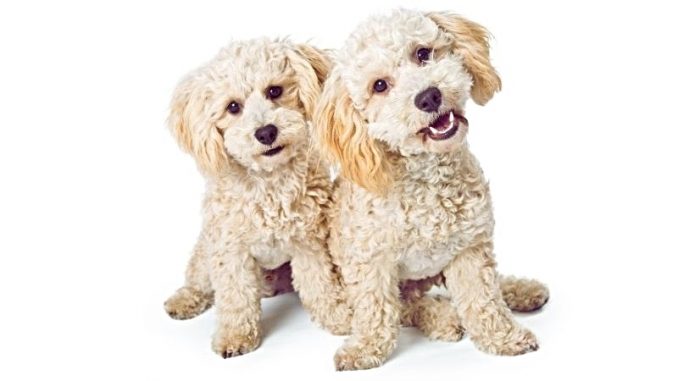
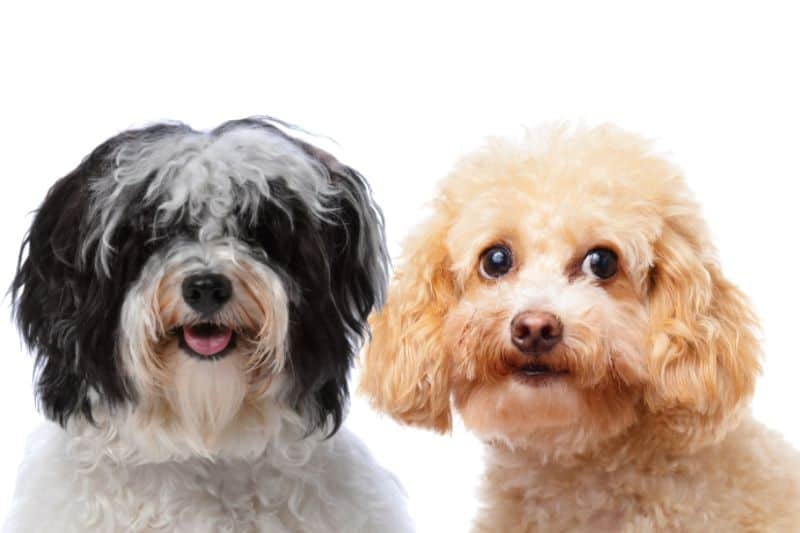
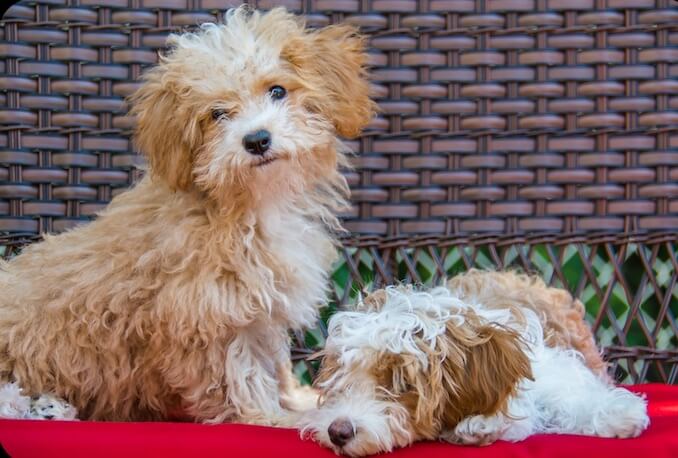
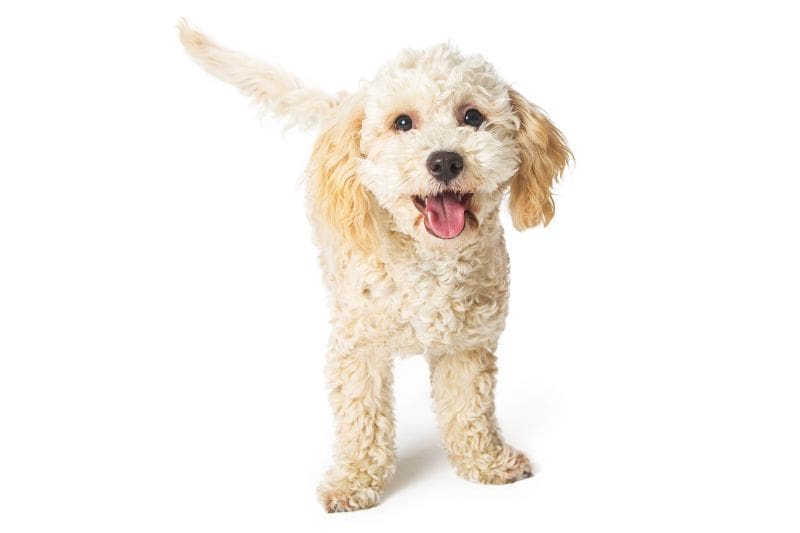
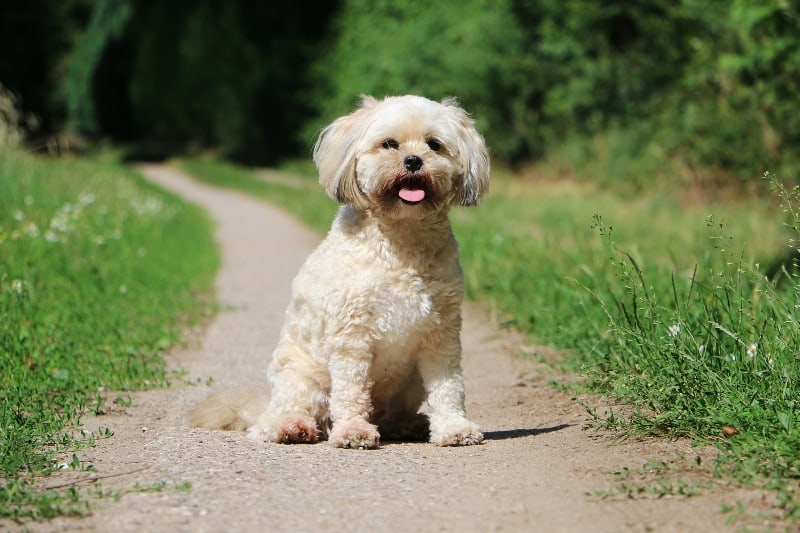


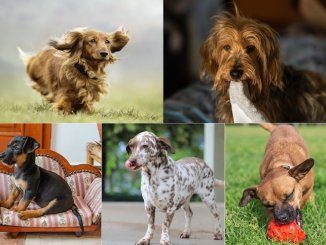
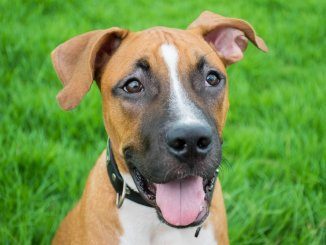
What’s the best way to find a reputable Havapoo breeder? We live in Houston, TX. This seems like a “breed” ripe for abuse in regards to puppy mill type breeders. Our other dog is a well bred GSD but my wife prefers a personal lap dog. The GSD previously got along well wit her 8 pound Schnoodle who recently died at age 17.
Hi Gary,
You are right, with mixed/designer breeds comes an increased chance of puppy mill type breeders due to lack of paperwork. If purchasing a mixed breed, I would go for a F1 with two purebred parents (with documentation). You can also start by reading our article on tips for finding a reputable breeder.
Gary, I recently purchased a havapoo from an amazing lady in Savannah, Georgia. Her site is gapkennels and she has been a breeder for many years and is not a puppy mill. I highly recommend her.
Can you tell me the name of the breeder in savannah
Hi Adriane, we are currently putting together a list of reputable breeders, we will be in touch with you once the list is complete. In the meantime, I have shared your comment so our readers can also share their breeder recommendations with you.
I am also looking for a reputable breeder of Havapoos. I have come across Farms or Mills or just Havanese Breeders who are not happy when I ask for a Havapoo.
Are there any reputable Havapoo breeders in the Seattle area? I am greatly interested in the breed and I do not know where to find a good breeder.
Thank you so much for this great article. I’m looking for a havapoo in or around Rochester MN. I would be really greatful for any breeder information
Hi Leah, I’ve shared your comment with the community. Hopefully someone can provide you with a breeder they know is reputable.
I’m interested in buying a Havapoo. I live in Morayshire Scotland, but willing to travel… any reputable breeders please do get in touch with me.
My little Havapoo sweetie Lola (well, she IS half Cuban!) is almost 2 years old now and we couldn’t love her more. She adores every pup, cat and human she meets.
Hello John, I am interested in getting a Havapoo and would be grateful if u would share your completed list of breeders
specifically in the south and north Carolina area and Georgia.
Hi Ann, Good luck on your search for a Havapoo, I have shared your comment with the community. We will also be in-touch when the breeder list is ready.
My havapoo Kayla is the cutest and sweetest dog I have ever met. She loves other dogs and is a pleasure in our home. We were lucky to find her near us. She is only 5.4 pounds at 11 months old and her father was a 5 pound toy poodle, her mother an 11.5 pound Havanese. She is a beautiful mix.
Do you know a Havapoo breeder in NY, NJ or Connecticut?
Hi Toni, I’m sharing your comment to see if someone can give you some advice.
Meet Ellie May, our 3 yr old Havapoo. We got her from breeder in Central Missouri. She is super laid back but super dependent on you. Make sure you or your household has someone to give attention to your puppy a lot! Ellie is happiest being held or on my lap while sitting. She loves being on the back on the couch or up high where she can she what’s going on. Did I mention she does NOT like being ignored? Again make sure you can give more attention than normal. Almost can be irritating if you’re busy or trying to get something done. But I soon forget when she cuddles up under my chin and gives me small kisses and lil grunts of contentment! Never had a breed that was this cuddly, smart and loving!
Thank you for your article. I have a 6 month little girl. I couldn’t love her more! I do have a question. We were planning on getting her spayed next week. I’ve been doing some reading and keep seeing conflicting opinions about spaying. I would really appreciate it if you would share your thoughts. Thank you again.
Hi Annie, you are correct. Any research will flag up both sides of the argument for spaying. It often comes down to individual choice. A consultation with your veterinarian would also help you make your decision.
Spaying can prevent a range of health issues in a female dog, specifically certain cancers of the reproductive system. It also prevents the infection pyometra which can be fatal.
If you choose to spay your female, they can gain weight afterwards, but this is easily managed through controlling her diet.
There are studies which suggest neutered dogs live longer than non-neutered, but neutered dogs are more likely to die from cancer or autoimmune disease and in-tact dogs are more likely to die from infection and trauma.
Other owners find it difficult managing an in-tact female. Not being able to walk her in populated areas when she’s in heat, having the mess around the house. Having male dogs paying a lot of attention to her. Nesting behaviour, false pregnancies. Accidental pregnancies. It can also be difficult organising dog care/daycare/kennelling for a female who is in heat. Many providers won’t accept them.
It does come down to individual choice, but a discussion with your Vet will certainly help.
Great and helpful article. I’d love to see that list of reputable breeders if you have it. I’m in Tampa FL
Hi there! Thanks for all the insightful info. We are looking for reputable havapoo breeders in Canada specifically Ontario or Quebec provinces. Does anyone have some advice?
Did you find one? I am also looking in Ontario.
Thanks so much for your great article. I’ve owned a purebred miniature poodle, bichon and most recently two Havanese at the same time (now in doggie heaven). I’m considering a Havapoo since I wanted a healthier breed, but now I’m not so sure. Our beloved Havanese had so many serious health issues:(
Hi there. We just got our Havapoo and wondering what’s the best sleeping arrangements for him? He’s 8 weeks old.
Hi Teri,
You should research crate training your Havapoo.
Found a Havapoo in the rain, freezing and abandoned. We took to vet and checked for chip, posted on every lost pet site and put up flyers locally but no luck – so I kept him. Still losing baby teeth so I put age at 6-7 months. Black with white spot on chin and chest – looks just like the pictures in this article.
I would love to see your list of reputable Havapoo breeders as well.I live in Massachusetts but am willing to travel.
I’m pretty sure we are getting a havapoo puppy in 2 weeks that is an F2 – both parents are Havapoos. I haven’t seen any information on F2’s. Any tips? Is there a reason why I can’t find any info on them? I’m a bit concerned that there will be issues. Thank you!
Hi Jennifer, the information in this article is based on all generations F1s, F2s and even F3s! F2s are better than F1s because they should be more predictable with appearance and temperament.
I’m interested in a female. Are you in Texas?
I just adopted a 15 week old Havapoo puppy whom I’ve named Henna Bear. I picked her up in Millersburg Ohio and drove home with her – a 7 hour drive. She was so good. No accidents, or crying. She slept thru the night with no issues. I found your article to be informative and helpful.
We just acquired a havapoo she is now 10 weeks old. We have already taught her to sit. We love her a lot but it nice to know how much we can expect from her